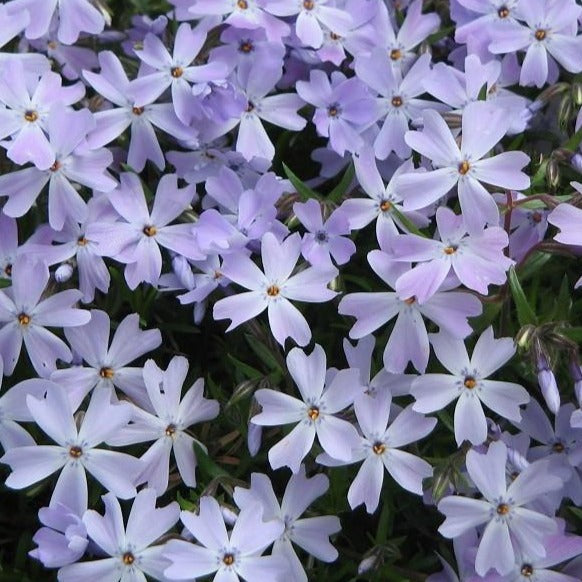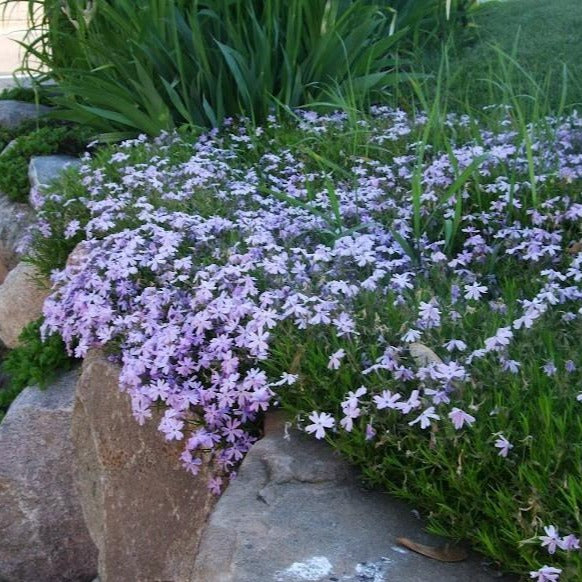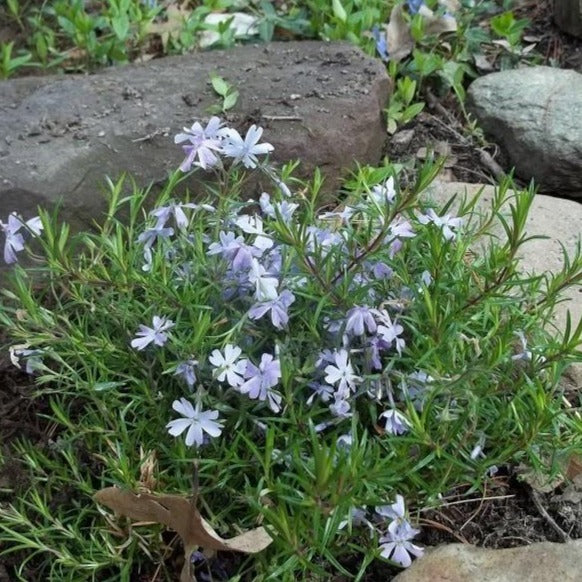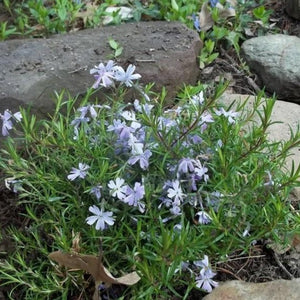Emerald Blue Creeping Phlox
Product Details
 Growing Zones 3-9
Growing Zones 3-9
| Soil Type | Well Drained |
| Sunlight | Full, Partial |
| Drought Tolerance | Good |
| Mature Height | 1 Foot |
| Mature Width | 1-2 Feet |
| Fall Color | Green |
| Bloom Color | Blue, Purple |
| Shipping Restriction | AZ |
The Emerald Blue Creeping Phlox has amazing purplish-blue color that really pops in your landscape. This native groundcover offers distinctive beauty and year-round interest that is hard to beat!
Lavender blue flowers smother this pretty and petite phlox in spring. This evergreen shrub is lush and deep green with petite, slender leaves. This variety is also known as moss phlox as the foliage has a resemblance to moss. Emerald Blue Phlox reaches a height of 1 foot at most and spreads to 2 feet wide. This perennial is vigorous and low maintenance.
Avoid mowing! Plant creeping phlox instead of grass in hard-to-mow areas.
Emerald Blue Creeping Phlox are lovely groundcovers. These plants have a low, spreading habit that becomes mat-like over time. Plant in mixed beds, rock, woodland, and cottage gardens, containers, low walls, and next to walkways. This phlox cascades like a waterfall over edges and down slopes if you like or trim them for a tight, clean edging. Plant in mass for a cool pop of color and a unique grass substitute.
Abundant blue blooms on an evergreen groundcover?! Sign me up! Order yours today. These sell out fast!
How Fast Does This Phlox Spread?
Grows at a slow to moderate speed to a spread of 1-2 feet. Space 18-24 inches apart to accomodate the width at maturity.
Where Should I Plant An Emerald Blue Creeping Phlox?
Plant this ground cover in rock beds, gardens or containers with well drained soil in full sun to part shade exposure throughout zones 3-9.
What Are Good Companion Plants For My Phlox?
Ferns, heuchera, and hosta do well mixed with this groundcover in garden beds, rock gardens or as border plants.
Spring and fall are ideal times to plant your Emerald Blue Creeping Phlox. In cooler zones summer is a great time to plant as well. Phlox can grow in zones 3 to 9.
Phlox thrive in full sun and prefer moist, well-drained soil. Some subtle afternoon shade may be ideal in hot climates. Water deeply when planting and 2 times per week for the first 3 months while your plant is establishing. Once established, Phlox are drought tolerant. Add 2-3 inches of mulch to prevent weeds and protect your plant's roots in extreme temperatures. Fertilize with our slow release fertilizer when planting and in spring for best results. Deadheading isn't necessary, but it can increase blooms and extend bloom time. Phlox are deer resistant and salt, pollution, and erosion tolerant. Creeping Phlox tolerate rocky and sandy conditions.
The best way to prevent disease and pests is by providing the appropriate care for your plants. Proper location choice, air circulation, watering, and fertilization are the keys to your success. Phlox don't tend to have a lot of issues with pests of disease, but because they grow at ground level there are a couple things to watch out for. Mites can be treated naturally with neem oil, or insecticidal soap. For severe infections you can use pesticides like carbaryl, also known as Sevin. To determine if mites are an issue look for the foliage to be dull and webbing to appear. Phlox can, on occasion, encounter fungal issues especially when moisture is high and air circulation is low. Neem Oil is an organic method of treating and preventing some fungal diseases and pests. It can be effective, but the entire plant must be coated in order for this method to be effective. Water at the base of this plant to avoid fungal disease on the leaves. For severe fungal infections treat with a fungicide.
Emerald Blue Creeping Phlox are lovely groundcovers with evergreen foliage. Mixes well with White Flame Phlox. These plants have a low, spreading habit that become mat-like over time. Plant in mixed beds, rock, woodland, and cottage gardens, containers, low walls, and next to walkways, similar to the Snow-n-Summer Asiatic Jasmine. This phlox will even cascade over edges or down slopes if you like or trim them for a tight, clean edging. Plant in mass for tons of color and a unique substitute for grass.
For additional options, be sure to browse our Phlox and Ground Cover Plants collections.















